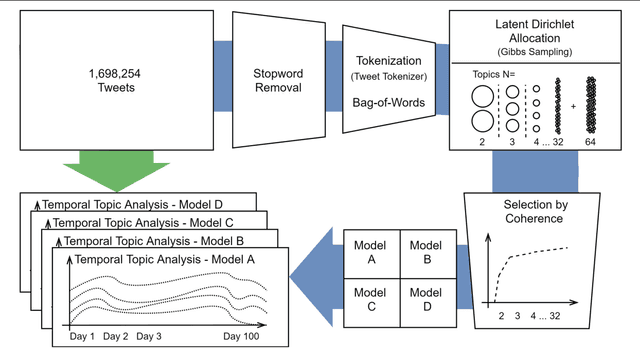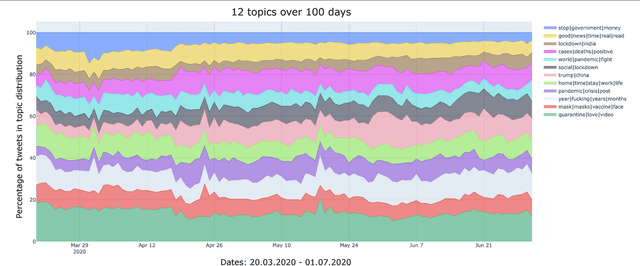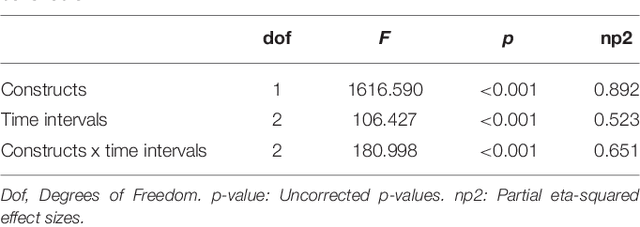Marianna M. Bolognesi
Red and blue language: Word choices in the Trump & Harris 2024 presidential debate
Oct 17, 2024Abstract:Political debates are a peculiar type of political discourse, in which candidates directly confront one another, addressing not only the the moderator's questions, but also their opponent's statements, as well as the concerns of voters from both parties and undecided voters. Therefore, language is adjusted to meet specific expectations and achieve persuasion. We analyse how the language of Trump and Harris during the debate (September 10th 2024) differs in relation to the following semantic and pragmatic features, for which we formulated targeted hypotheses: framing values and ideology, appealing to emotion, using words with different degrees of concreteness and specificity, addressing others through singular or plural pronouns. Our findings include: differences in the use of figurative frames (Harris often framing issues around recovery and empowerment, Trump often focused on crisis and decline); similar use of emotional language, with Trump showing a slight higher tendency toward negativity and toward less subjective language compared to Harris; no significant difference in the specificity of candidates' responses; similar use of abstract language, with Trump showing more variability than Harris, depending on the subject discussed; differences in addressing the opponent, with Trump not mentioning Harris by name, while Harris referring to Trump frequently; different uses of pronouns, with Harris using both singular and plural pronouns equally, while Trump using more singular pronouns. The results are discussed in relation to previous literature on Red and Blue language, which refers to distinct linguistic patterns associated with conservative (Red) and liberal (Blue) political ideologies.
Covid-19 Discourse on Twitter: How the Topics, Sentiments, Subjectivity, and Figurative Frames Changed Over Time
Mar 16, 2021



Abstract:The words we use to talk about the current epidemiological crisis on social media can inform us on how we are conceptualizing the pandemic and how we are reacting to its development. This paper provides an extensive explorative analysis of how the discourse about Covid-19 reported on Twitter changes through time, focusing on the first wave of this pandemic. Based on an extensive corpus of tweets (produced between 20th March and 1st July 2020) first we show how the topics associated with the development of the pandemic changed through time, using topic modeling. Second, we show how the sentiment polarity of the language used in the tweets changed from a relatively positive valence during the first lockdown, toward a more negative valence in correspondence with the reopening. Third we show how the average subjectivity of the tweets increased linearly and fourth, how the popular and frequently used figurative frame of WAR changed when real riots and fights entered the discourse.
Framing COVID-19: How we conceptualize and discuss the pandemic on Twitter
Apr 15, 2020



Abstract:Doctors and nurses in these weeks are busy in the trenches, fighting against a new invisible enemy: Covid-19. Cities are locked down and civilians are besieged in their own homes, to prevent the spreading of the virus. War-related terminology is commonly used to frame the discourse around epidemics and diseases. Arguably the discourse around the current epidemic will make use of war-related metaphors too,not only in public discourse and the media, but also in the tweets written by non-experts of mass communication. We hereby present an analysis of the discourse around #Covid-19, based on a corpus of 200k tweets posted on Twitter during March and April 2020. Using topic modelling we first analyze the topics around which the discourse can be classified. Then, we show that the WAR framing is used to talk about specific topics, such as the virus treatment, but not others, such as the effects of social distancing on the population. We then measure and compare the popularity of the WAR frame to three alternative figurative frames (MONSTER, STORM and TSUNAMI) and a literal frame used as control (FAMILY). The results show that while the FAMILY literal frame covers a wider portion of the corpus, among the figurative framings WAR is the most frequently used, and thus arguably the most conventional one. However, we conclude, this frame is not apt to elaborate the discourse around many aspects involved in the current situation. Therefore, we conclude, in line with previous suggestions, a plethora of framing options, or a metaphor menu, may facilitate the communication of various aspects involved in the Covid-19-related discourse on the social media, and thus support civilians in the expression of their feelings, opinions and ideas during the current pandemic.
 Add to Chrome
Add to Chrome Add to Firefox
Add to Firefox Add to Edge
Add to Edge